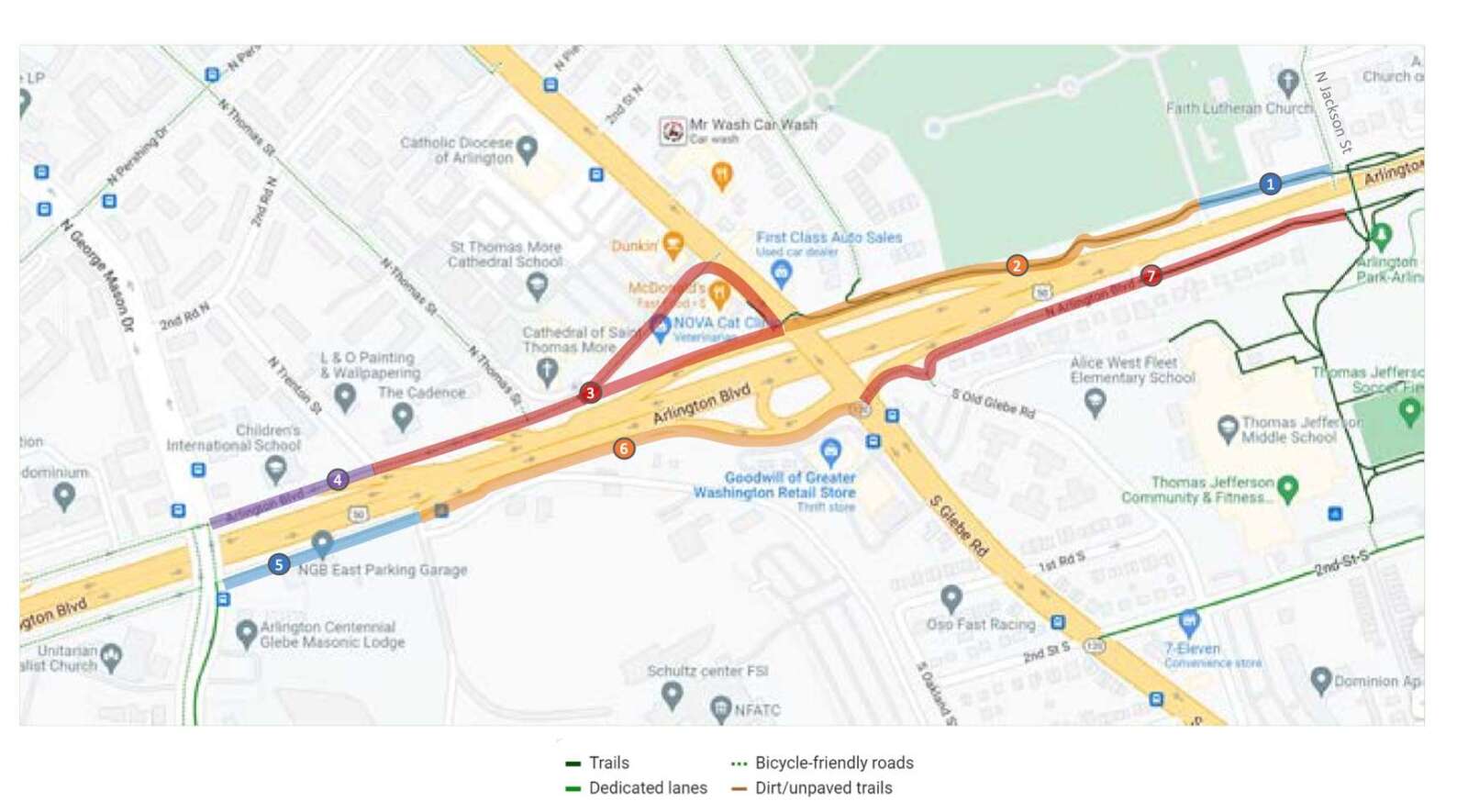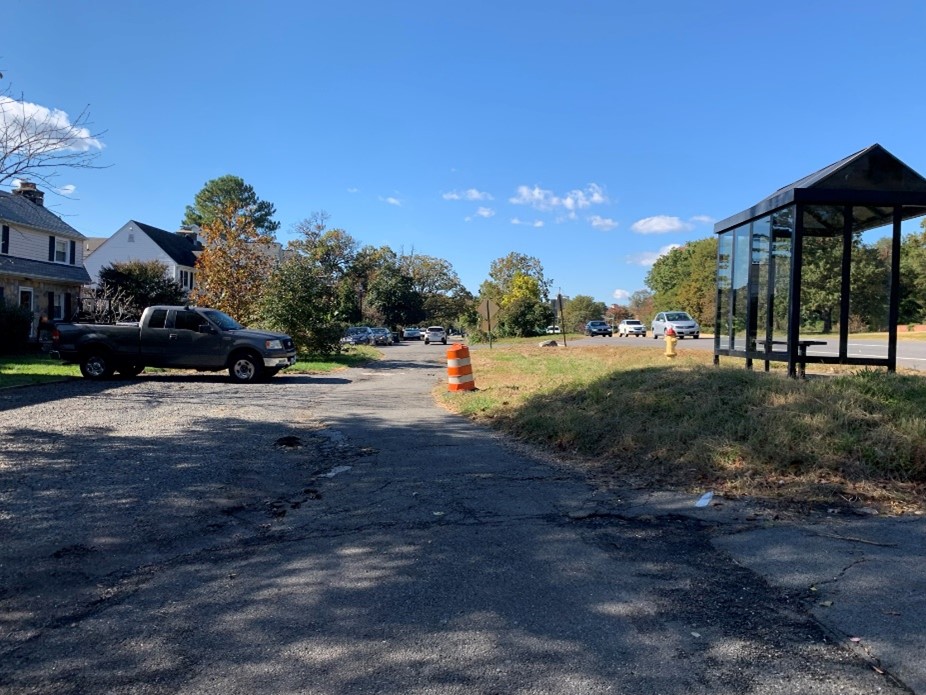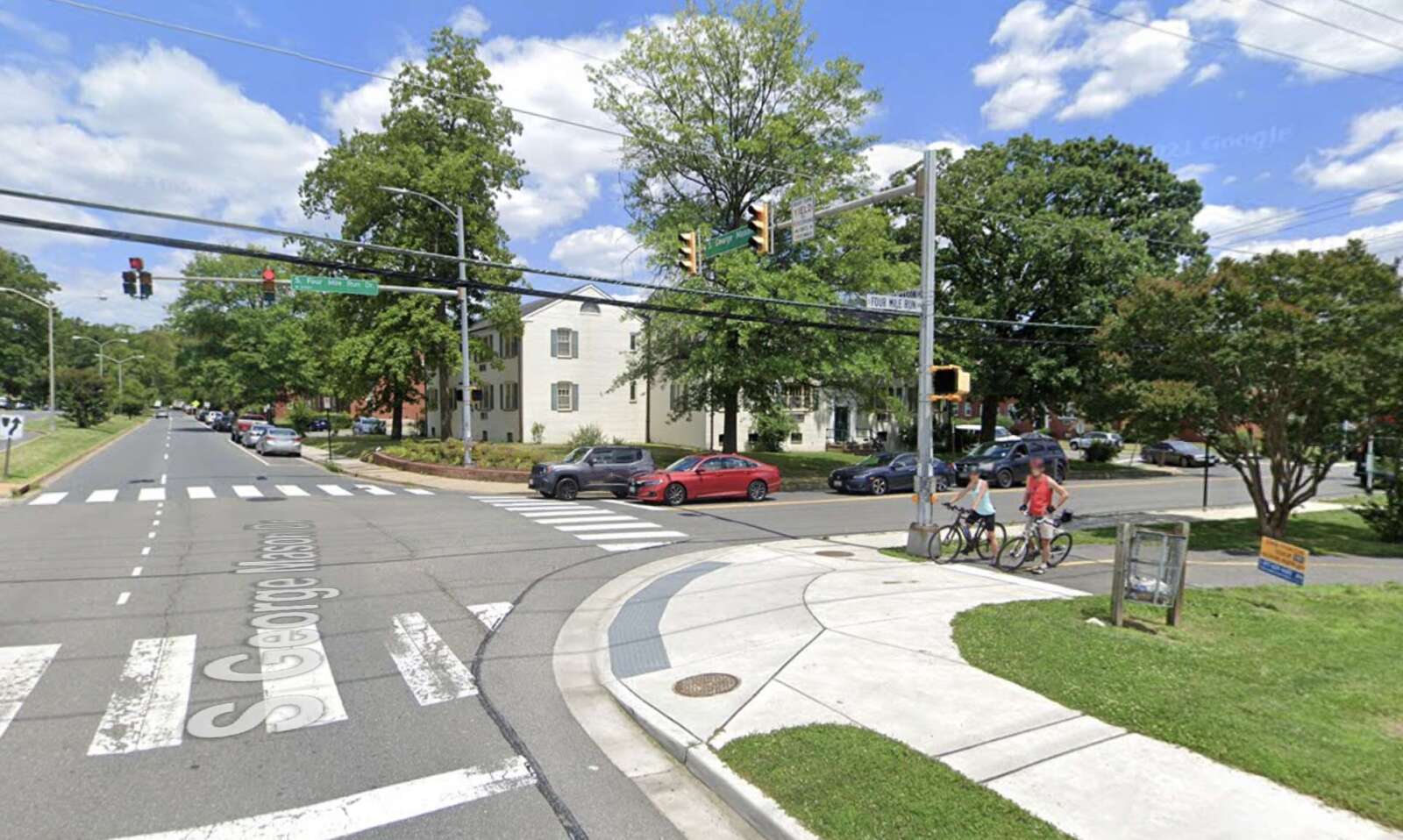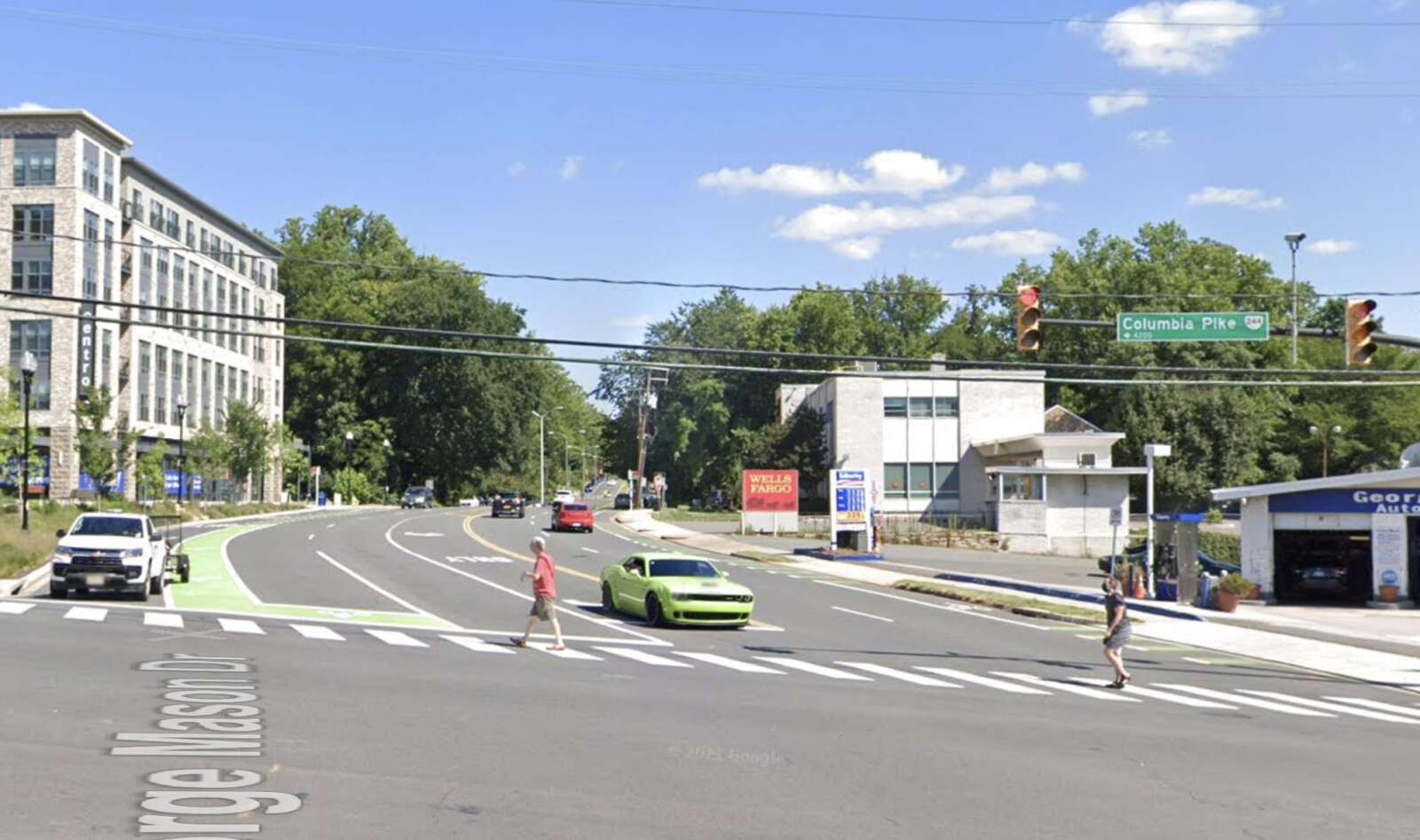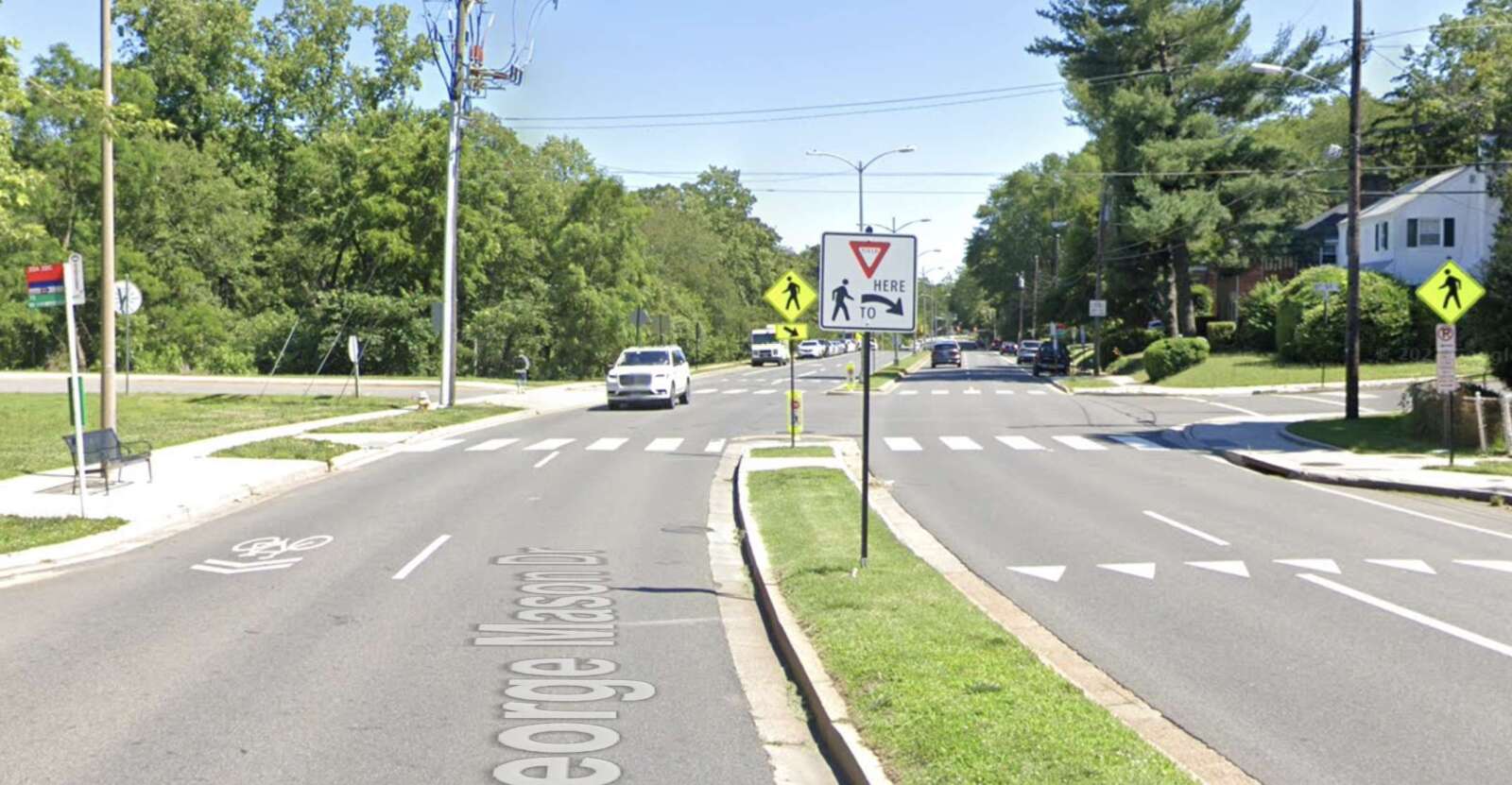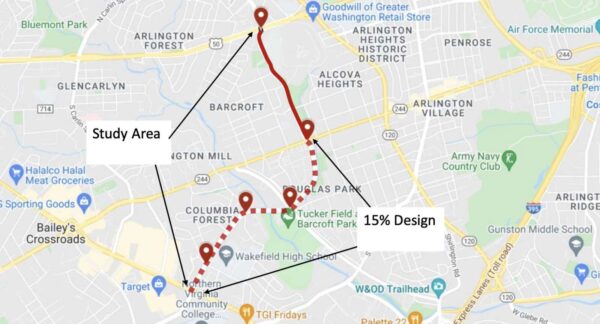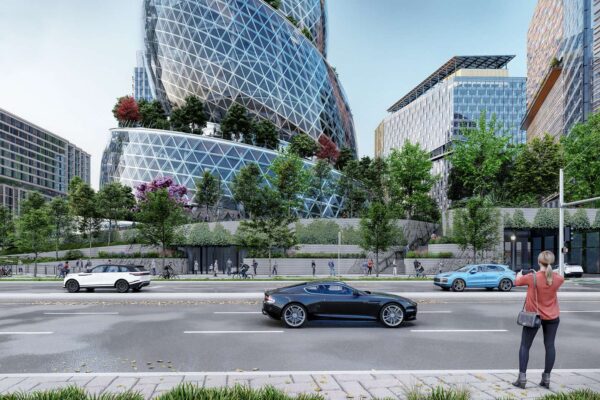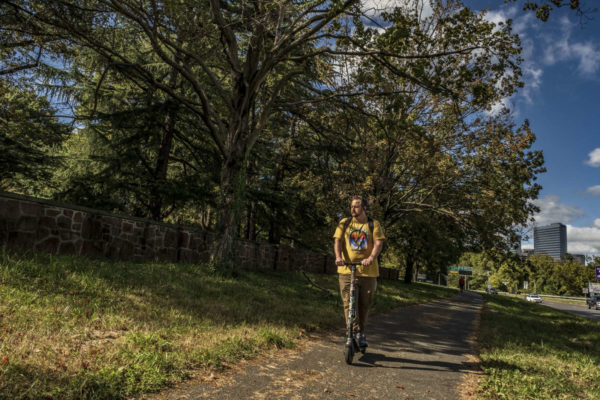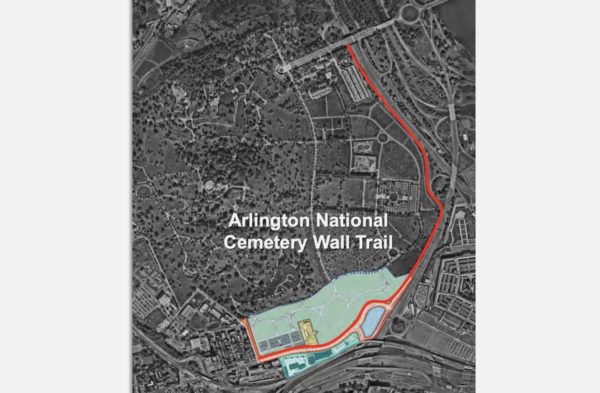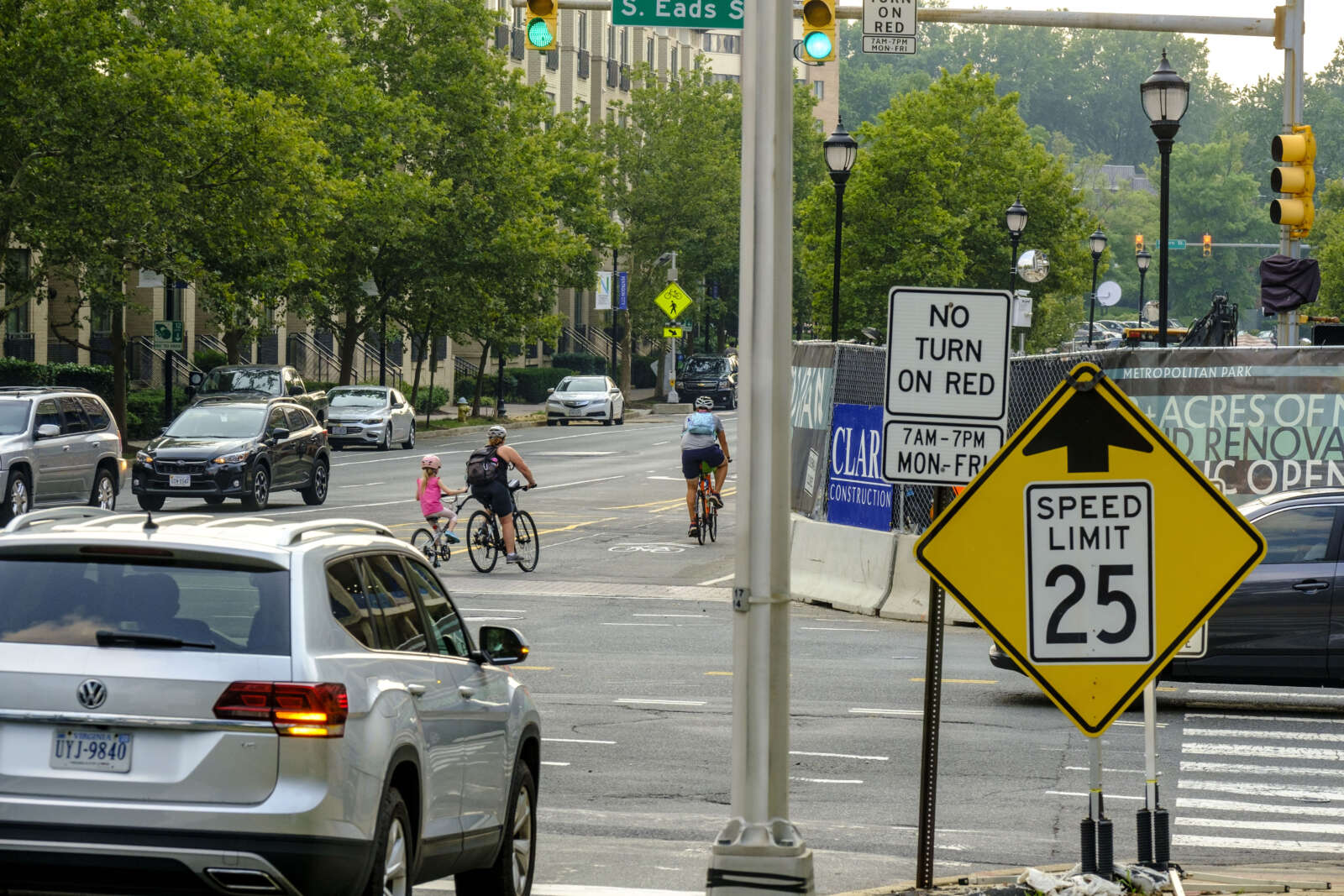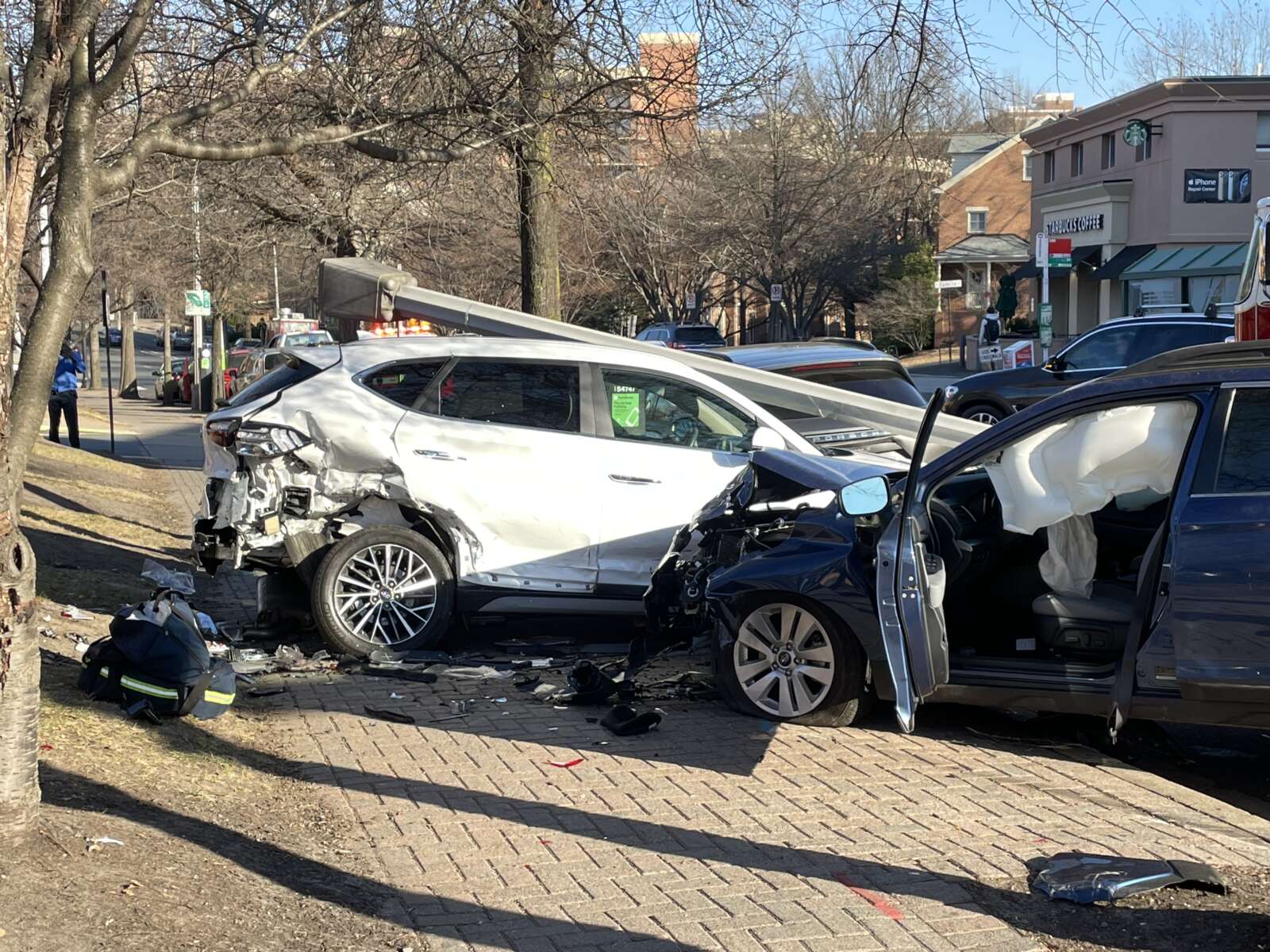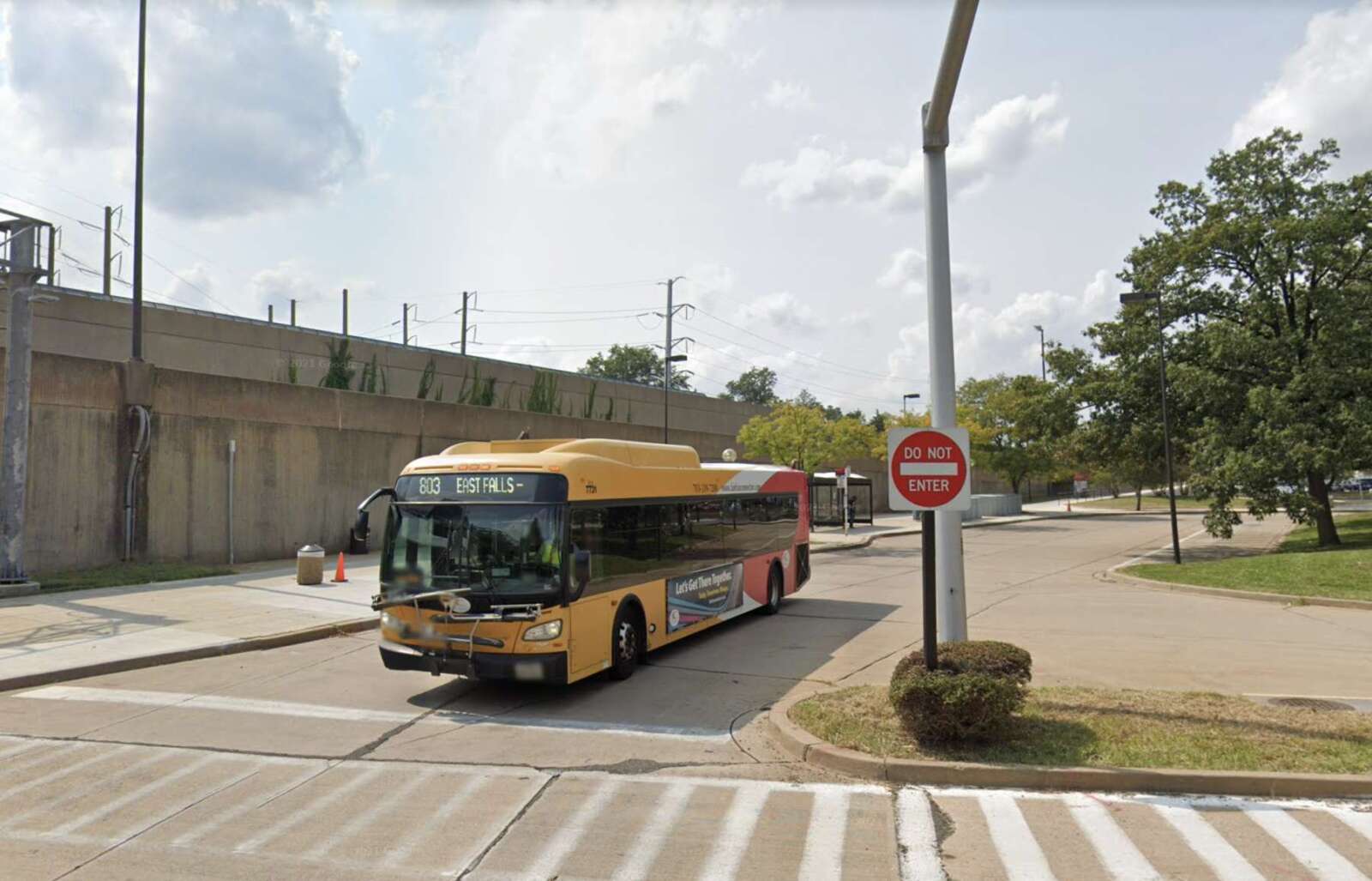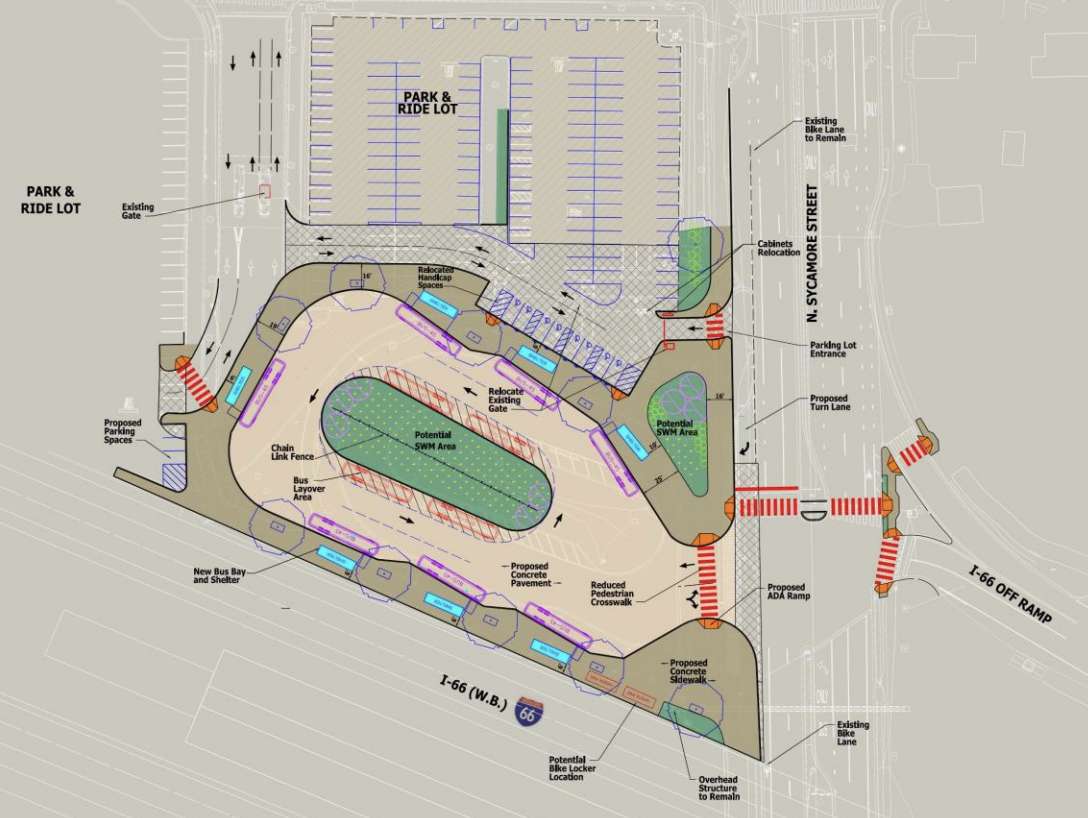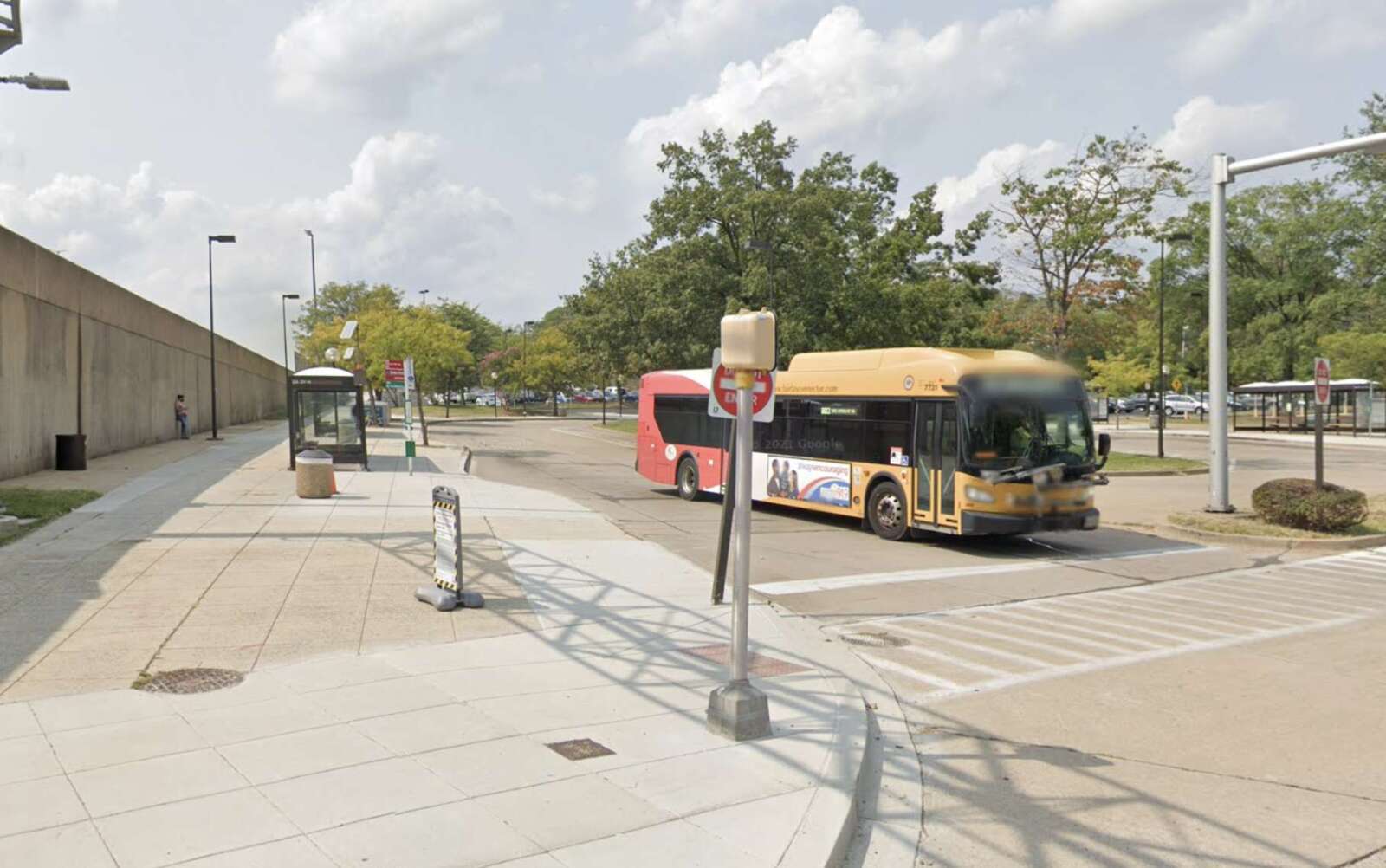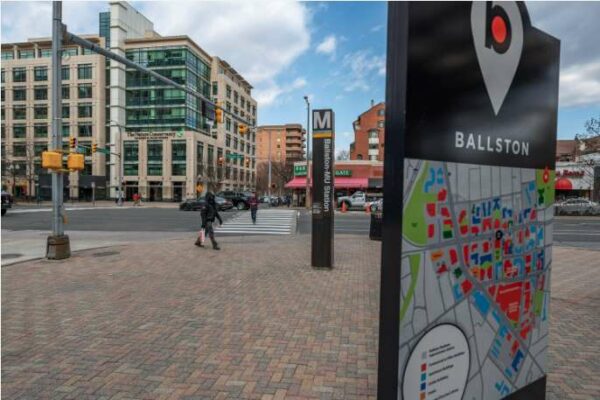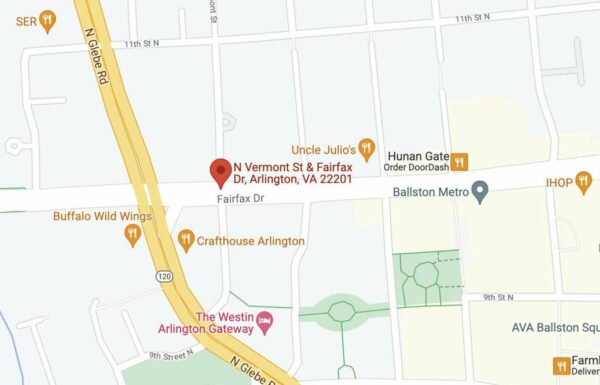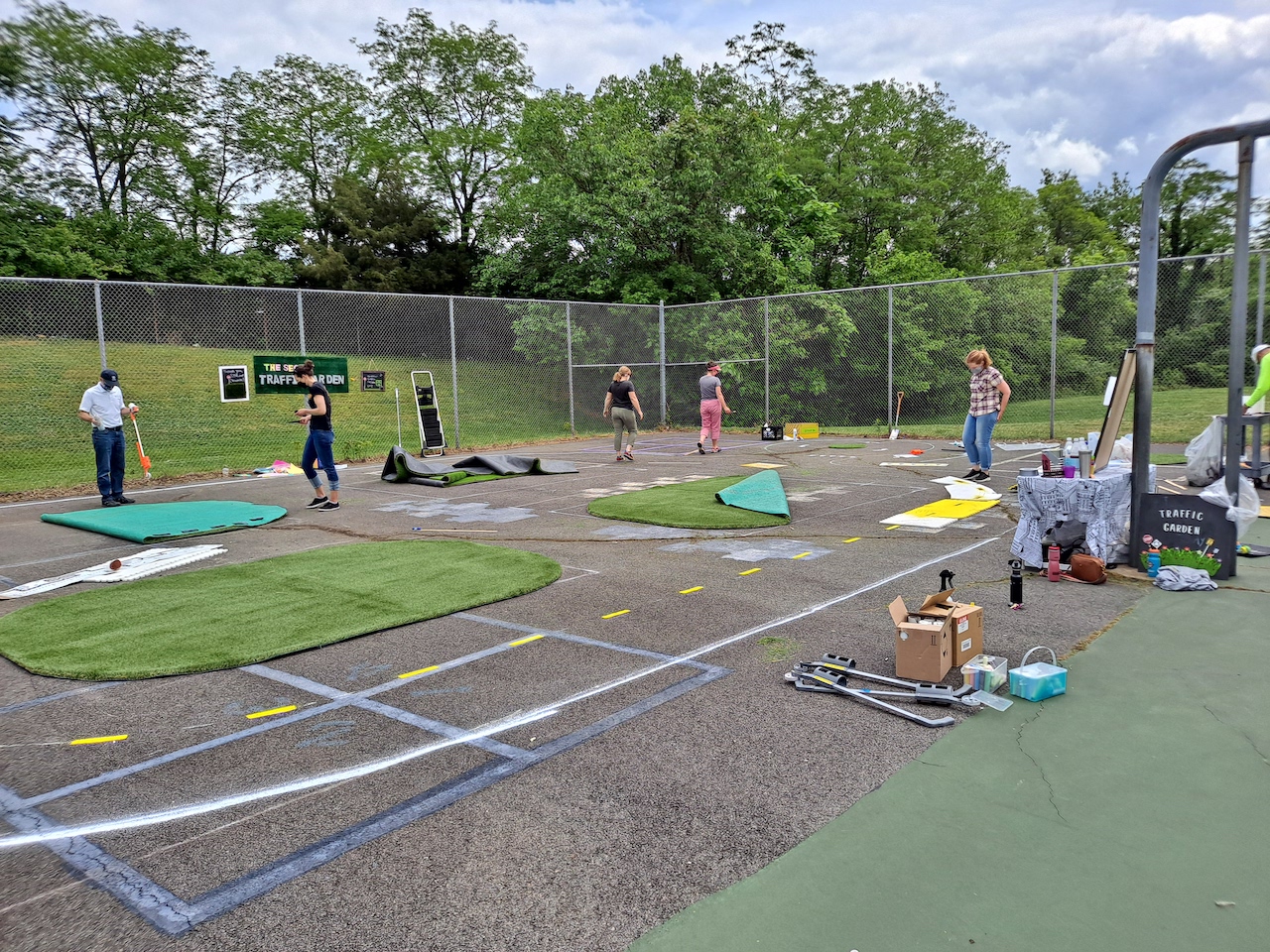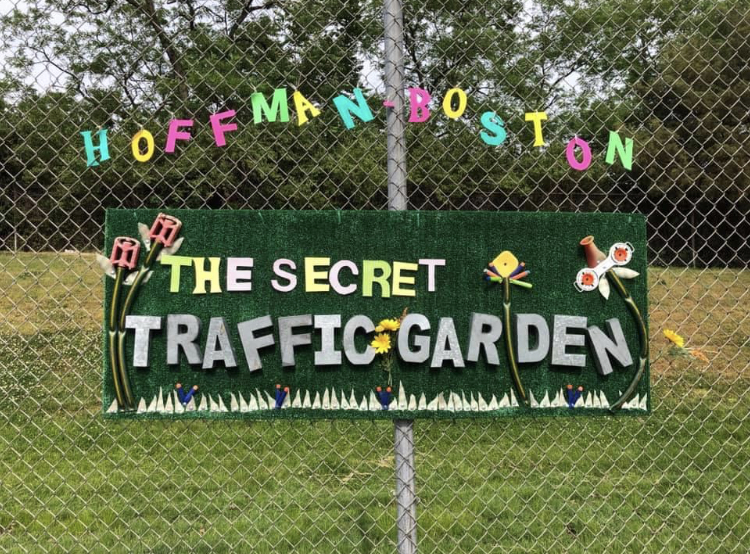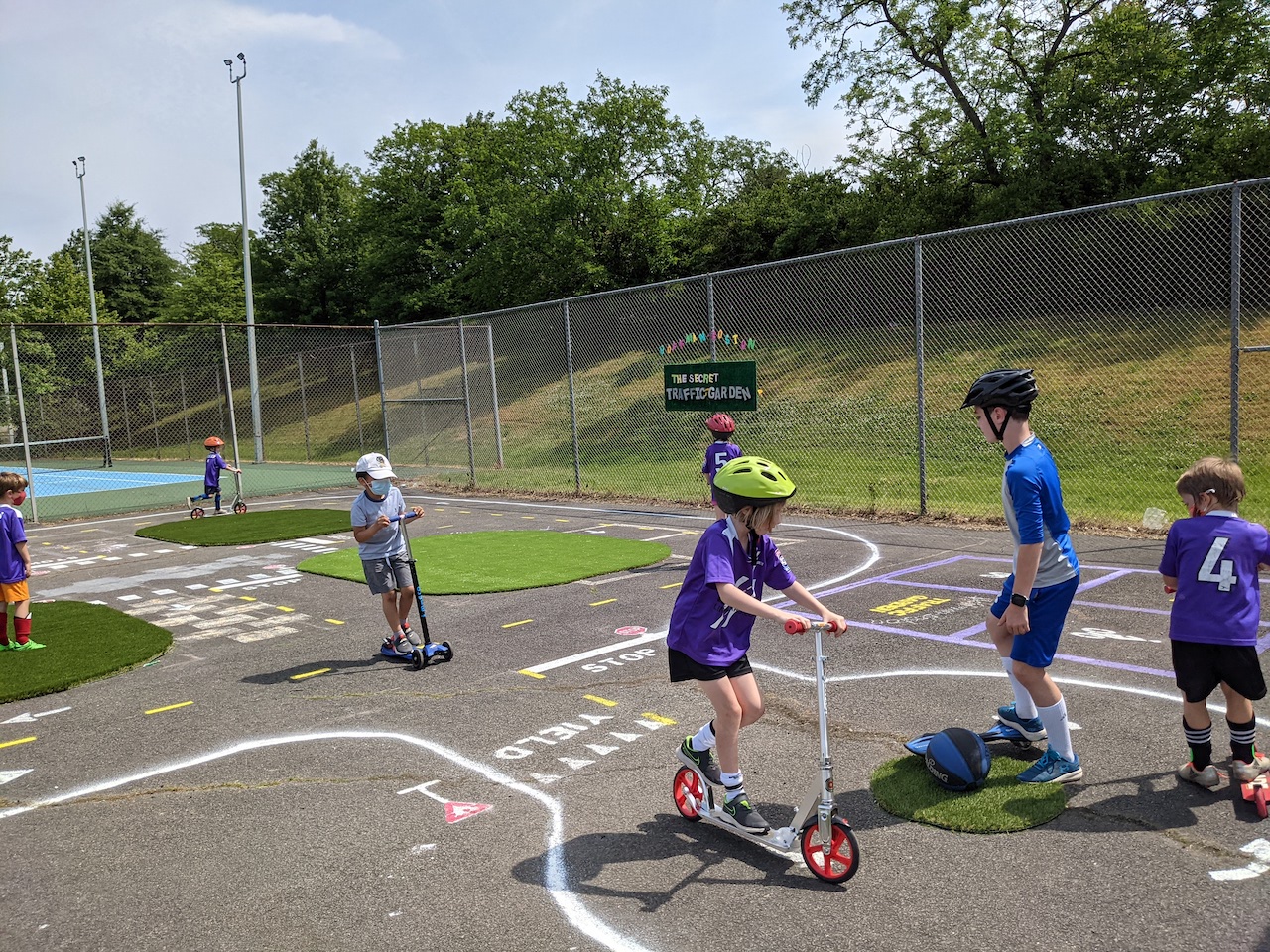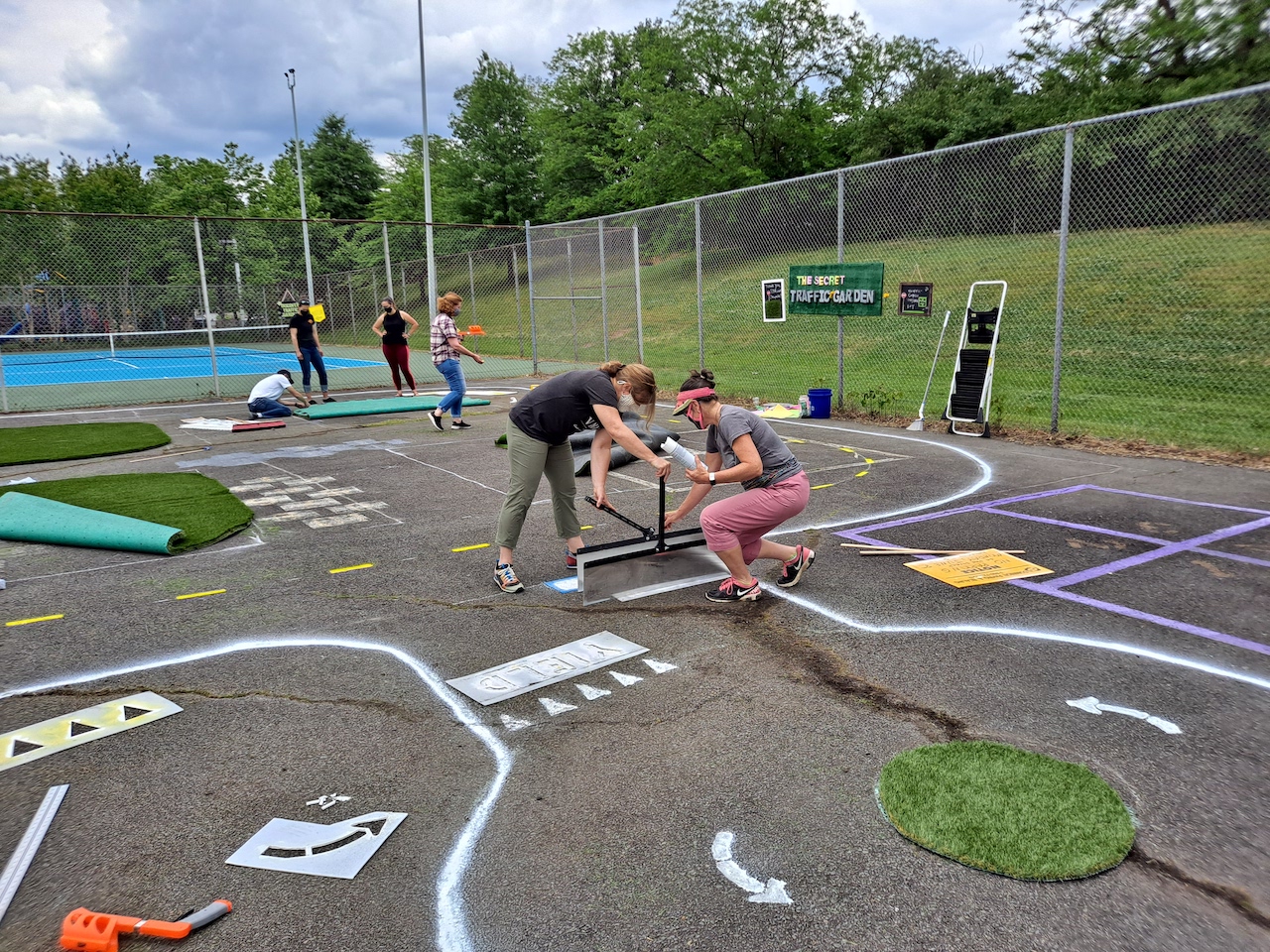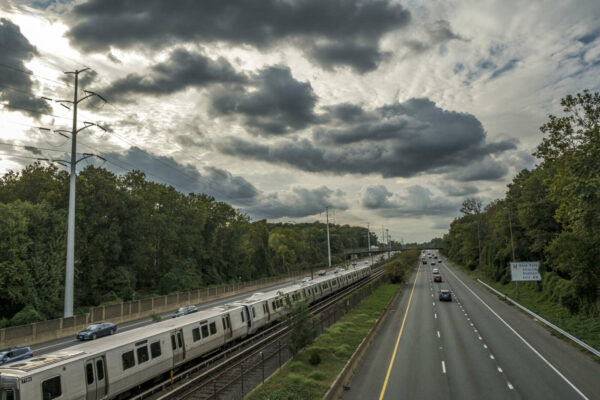The Wild West of e-bikes and e-scooter parking is being tamed.
Last month, Arlington County began installing 100 special street parking spaces for shared and private micro-mobility devices. And shared transportation providers such as Bird, LINK and new arrival Veo are footing the bill.
Some locals have long complained that scooter parking blocks pedestrian and, at times, vehicle traffic. These “corrals” are intended to address this problem, now that Arlington permits the operation of up to 350 e-bikes and 2,000 e-scooters.
Each hitching post consists of three bike rack half-loops, which provide six parking spaces, surrounded by flex-posts that make the installation more visible to drivers.
“Scooter and bike corrals are designated parking spots in public areas for people to start and end rides safely,” said Arlington Dept. of Environmental Services spokeswoman Claudia Pors. “They are important to keep sidewalks clear for people walking, and aim to cutdown on tripping hazards and other risks for people sharing public spaces.”
About 20 existed in the county as of this past December. Planning and scouting for this new batch of corrals began last year, with the county on track to install 100 corrals by the end of this year and another 100 per year for the next three fiscal years, Pors said.
From start to finish, the process to choose a location and install a corral takes four months and costs about $1,000. The county is funding it with the $80 fee per device per year that micro-mobility companies pay to operate in Arlington.
These stations are being placed where cars are already restricted, such as curbs near intersections, to improve visibility.
“This particular example of placement also helps maintain visibility, so everyone traveling can keep a clear line of sight around high-traffic areas regardless of their mode of transportation,” she said.
As a bonus, drivers don’t lose street parking.
Of the corrals in place, most are located along the Rosslyn-Ballston and Route 1 (Crystal City/Pentagon City) corridors, where the bulk of rides have started since e-scooters and bikes arrived in 2018.
“The team is selecting corral locations throughout the county based on data showing where micro-mobility trips are being made,” Pors said.
The county, meanwhile, is taking suggestions for more locations — and maybe a different name, too.
Want to suggest new Arlington locations for "micro-mobility device corrals" or maybe just a better name for such things? https://t.co/EwWcRybbW4
— Arlington Department of Environmental Services (@ArlingtonDES) September 6, 2022
Cycling advocate Gillian Burgess said in a tweet that she would like to see additional corrals in Arlington’s more suburban neighborhoods, where sidewalks are narrow and are easily blocked by bikes and e-scooters.
“They should put a corral by every crosswalk, to increase visibility,” she said. “They could start at [N. Nelson Street] at the crosswalk for the Custis Trail, which is also a hub stop.”
https://twitter.com/NeilBakesBikes/status/1567202084591747076
Although the corrals are placed where cars cannot park, one Twitter user observed that some drivers will just stop somewhere else — like a bike lane.
https://twitter.com/zacycles/status/1567267663084244999





